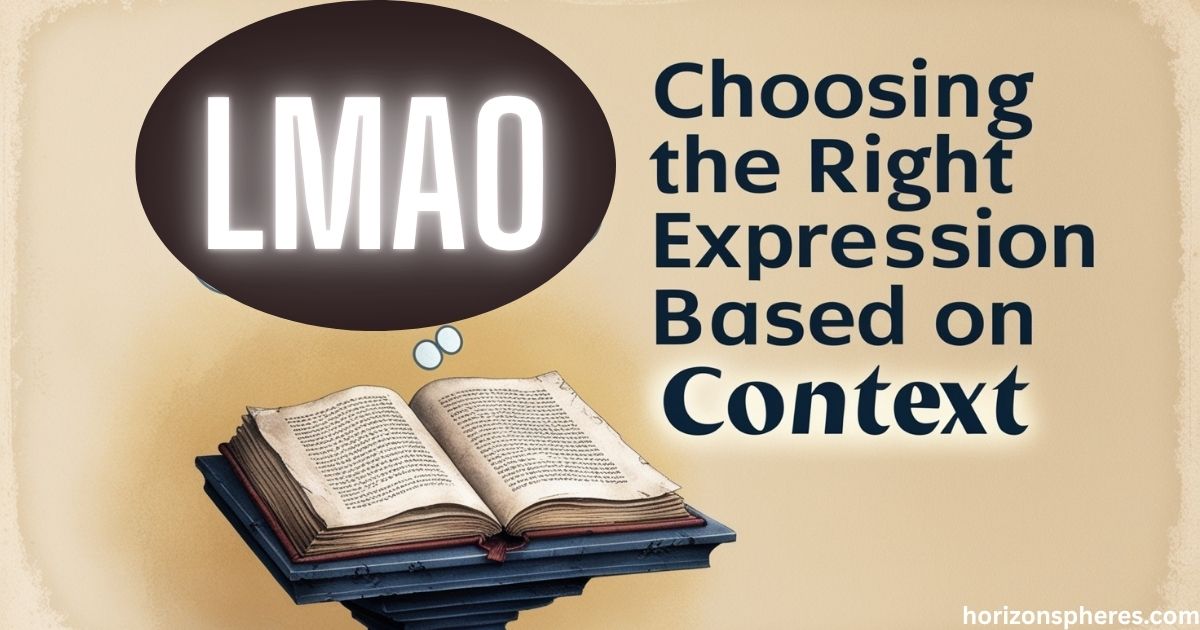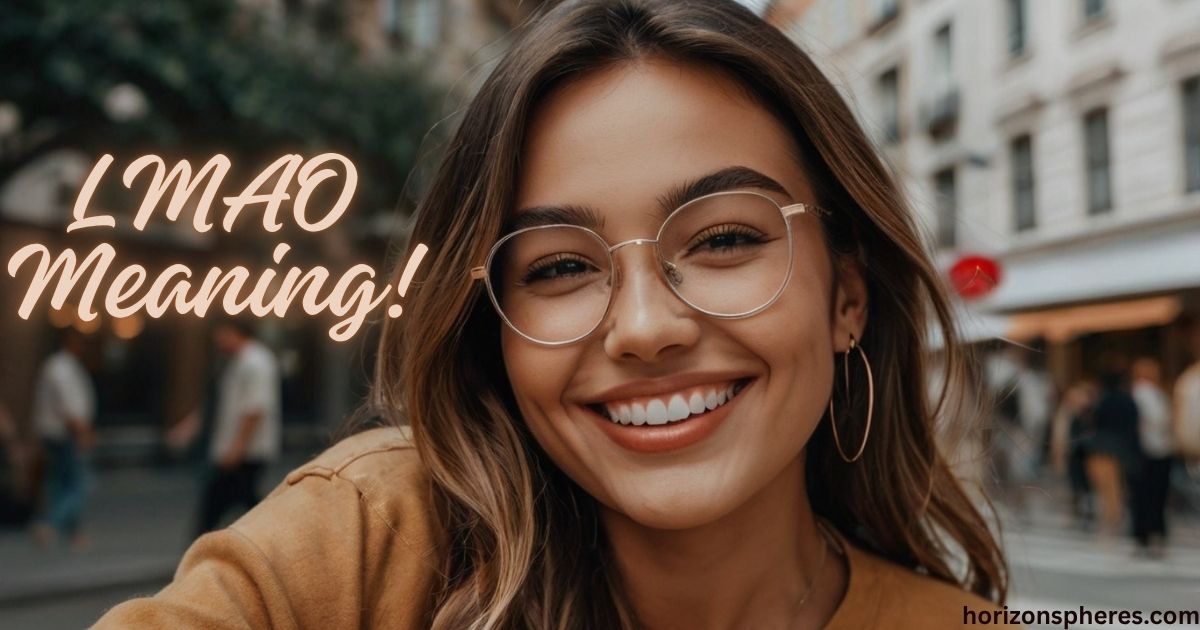You’ve probably typed “LMAO” hundreds of times, but do you really know when you’re using it wrong? In today’s digital world, understanding internet slang isn’t just helpful—it’s essential. This comprehensive guide reveals everything about LMAO meaning and how Americans use it effectively in 2025.
What Does LMAO Stand For?
LMAO stands for “Laughing My Ass Off”—a popular internet acronym expressing extreme amusement. Unlike simple “LOL” responses, LMAO conveys intense laughter that goes beyond basic chuckling. Americans have embraced this phrase since the early 1990s, making it a staple of digital communication across all age groups and platforms.
Understanding the Intensity Scale
When someone uses LMAO, they’re telling you something is genuinely hilarious. It’s stronger than LOL but not as extreme as LMFAO (which adds an F-word for maximum emphasis). The LMAO meaning in chat typically signals authentic amusement rather than polite acknowledgment.
Cultural Variations
Different communities interpret LMAO differently. The LMAO meaning in Hindi and LMAO meaning in Urdu communities often translates to similar expressions of intense laughter. However, context matters significantly across various cultural backgrounds within America’s diverse population.
Origins and Evolution of LMAO

The journey of LMAO began in early AOL chat rooms during the 1990s. Internet users needed quick ways to express emotions through text, leading to creative acronym development. LMAO emerged alongside LOL, BRB, and other classics that shaped online communication forever.
From Dial-Up to Social Media
MySpace popularized LMAO among teenagers in the 2000s. Facebook then brought it to mainstream audiences, while Twitter’s character limits made acronyms essential. Today, TikTok and Instagram users continue this evolution, adapting LMAO for modern digital conversations.
The Urban Dictionary Impact
The LMAO meaning urban dictionary entries show how this acronym evolved beyond simple definitions. Users created variations, context-specific meanings, and cultural interpretations that reflect America’s diverse online communities and their unique communication styles.
Usage of LMAO in Digital Communication
LMAO works perfectly in casual settings like text messages, gaming chats, and social media comments. Americans use it daily across platforms, but timing and audience determine its effectiveness. Understanding when and where to use LMAO separates skilled communicators from amateur users.
Perfect LMAO Situations
Text messages with close friends represent LMAO’s natural habitat. Gaming conversations often feature LMAO responses to funny moments. Social media reactions to memes, videos, and jokes frequently include LMAO. Dating apps sometimes see LMAO usage, though context matters significantly.
Gender-Specific Usage Patterns
The LMAO meaning from a girl often expresses genuine amusement or friendly engagement. Conversely, LMAO meaning from a guy might indicate anything from authentic laughter to casual acknowledgment. These patterns reflect broader communication differences rather than universal rules.
| Platform | LMAO Appropriateness | Best Alternatives |
|---|---|---|
| Text Messages | ✅ Perfect | LOL, 😂 |
| ✅ Great | 🤣, “Too funny!” | |
| Twitter/X | ✅ Good | ROFL, Haha |
| ❌ Avoid | “That’s amusing” | |
| Professional Email | ❌ Never | “I found that entertaining” |
Politeness and Appropriateness of LMAO
LMAO contains “ass,” making it inappropriate for formal settings or conservative audiences. Professional environments, academic discussions, and family gatherings might require cleaner alternatives. Smart communicators recognize these boundaries and adjust their language accordingly for maximum effectiveness and respect.
Professional Considerations
Workplace communication demands careful LMAO usage. Client emails should never include LMAO. Boss interactions typically require more formal expressions. Team chats might allow LMAO depending on company culture. Always err on the side of professionalism when uncertain.
Cultural Sensitivity
America’s diverse population includes communities with different comfort levels regarding LMAO. Religious groups might find it offensive. Older generations may not understand or appreciate it. International colleagues could misinterpret its meaning or intensity level.
More Post: WYF Meaning: The Ultimate 2025 Guide That Will Transform Your Digital Communication Skills
Alternatives to LMAO
Smart communicators master multiple ways to express laughter digitally. These 11 alternatives provide options for every situation, audience, and platform while maintaining authenticity and appropriate tone.
1. LOL (Laughing Out Loud)
LOL remains the safest, most universally accepted laughter acronym. Professional settings accept it readily. All age groups understand its meaning. Cross-cultural communication benefits from LOL’s widespread recognition and neutral tone.
2. Haha or Hahaha
“Haha” sounds natural and conversational. Multiple “ha”s indicate intensity levels. Voice-to-text captures it perfectly. International audiences understand it intuitively without cultural translation needed.
3. ROFL (Rolling On the Floor Laughing)
ROFL conveys intense amusement without vulgarity. Gaming communities use it frequently. Social media accepts it readily. Family-friendly environments welcome ROFL as a clean alternative to stronger expressions.
4. LMBO (Laughing My Butt Off)
LMBO maintains LMAO’s intensity while staying clean. Conservative audiences appreciate this consideration. Family chats can use it safely. Professional-casual settings might accept LMBO where LMAO fails.
5. 😂 (Face with Tears of Joy Emoji)
The 😂 emoji transcends language barriers completely. Visual communication often works better than text. Social media algorithms favor emoji usage. Mobile messaging makes emojis incredibly convenient and expressive.
6. 🤣 (Rolling on the Floor Laughing Emoji)
🤣 shows extreme amusement visually and effectively. Younger demographics prefer emoji over text acronyms. Instagram stories feature this emoji prominently. Quick reactions benefit from single-emoji responses.
Choosing the Right Expression Based on Context

Context determines everything in digital communication success. Audience age, relationship dynamics, platform norms, and cultural backgrounds all influence which laughter expression works best. Master these considerations to communicate effectively across all situations and maintain appropriate professional boundaries.
Audience Analysis
Generational preferences vary significantly across American demographics. Baby Boomers might prefer “That’s funny!” over acronyms. Gen X understands both LOL and LMAO. Millennials created most internet slang. Gen Z innovates constantly with new expressions and creative emoji combinations.
| Age Group | Preferred Expression | Avoid Using |
| Baby Boomers (1946-1964) | “That’s amusing!” | LMAO, ROFL |
| Gen X (1965-1980) | LOL, Haha | Excessive emojis |
| Millennials (1981-1996) | LMAO, 😂 | Outdated slang |
| Gen Z (1997-2012) | 💀, “I’m dead” | Basic LOL |
The Psychology Behind LMAO Usage
Americans use LMAO to build rapport and express genuine emotions in digital spaces. It creates social bonds, shows engagement levels, and demonstrates cultural awareness. Understanding these psychological factors helps you use LMAO more effectively in various communication contexts and relationship dynamics.
Building Digital Connections
Shared laughter creates instant connections between strangers online. LMAO responses show active engagement rather than passive consumption. Mutual humor builds trust in digital relationships. Authentic reactions distinguish genuine communication from automated responses.
Emotional Expression Online
Text-based communication lacks vocal tones and facial expressions. LMAO fills this gap by conveying emotional intensity. Digital empathy requires these verbal cues for understanding. Relationship building online depends on emotional authenticity and clear communication.
More Post: Gyat Meaning: The Ultimate 2025 Guide Every Parent & Teen Must Read
Common LMAO Mistakes to Avoid
Overusing LMAO diminishes its impact and makes you seem inauthentic. Wrong timing can offend or confuse recipients. Autocorrect failures create embarrassing situations. Cultural misunderstandings damage relationships and professional reputations permanently.
Timing Issues
Serious conversations don’t need LMAO responses ever. Tragic news requires empathy, not laughter expressions. Professional announcements demand appropriate reactions. Relationship conflicts need thoughtful responses rather than dismissive humor.
Overuse Problems
Repetitive LMAO usage loses all meaning quickly. Every response shouldn’t include laughter expressions. Conversation balance requires varied reactions and authentic engagement. Social awareness prevents communication fatigue in your relationships.
Frequently Asked Question
What is LMAO standing for?
LMAO stands for “Laughing My Ass Off,” expressing extreme amusement in digital communication across social media platforms.
Why is LMAO a swear word?
LMAO contains “ass,” considered mildly vulgar, making it inappropriate for formal settings or conservative audiences in America.
Why do girls say LMFAO?
LMFAO adds emphasis meaning “Laughing My F***ing Ass Off,” used by all genders to express intense laughter online.
What does LMFAO mean?
LMFAO means “Laughing My F***ing Ass Off,” a more intense version of LMAO with stronger profanity included.
Conclusion
Understanding LMAO’s true meaning and appropriate usage helps you communicate effectively in 2025’s digital landscape. Choose alternatives wisely based on your audience and context. Master these expressions to enhance your online conversations while maintaining respect and professionalism when needed for lasting relationships.










